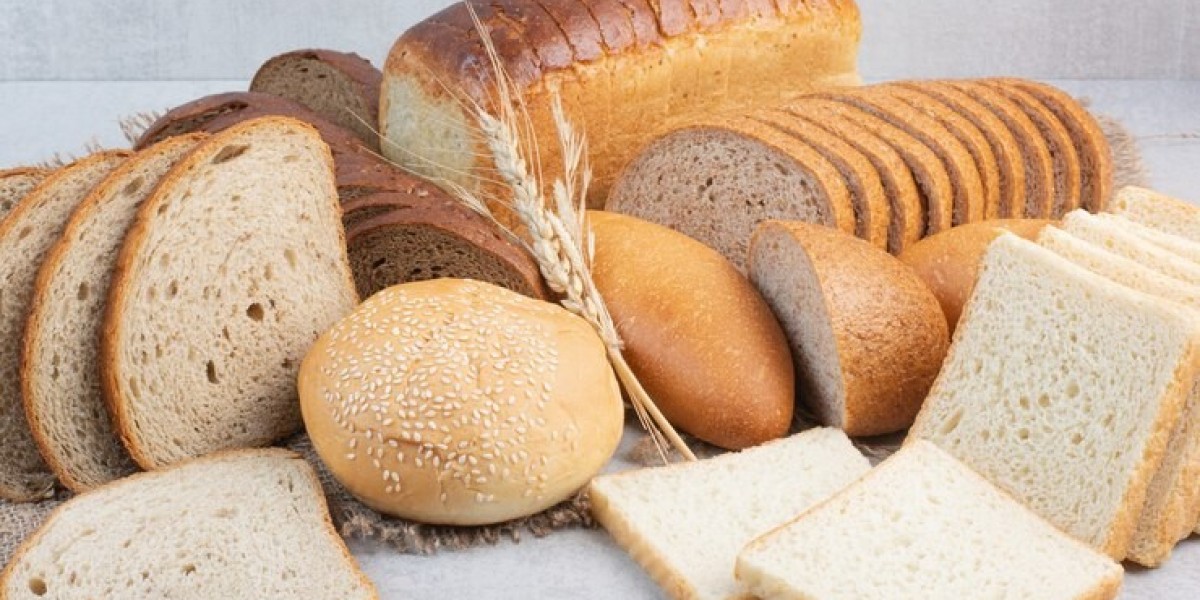Did you know that bread has been a staple in the human diet for over 14,000 years? Throughout history, various cultures have developed their own unique bread types, using different grains and baking methods.
Today, two popular varieties are wheat bread and rye bread. While they might look similar at a glance, they have unique features and benefits.
In this blog, we will explore the differences between these two types of bread.
What is Wheat Bread?
Wheat bread, particularly whole wheat bread, is made from wheat grains that are milled to create flour. This type of bread is known for its versatility and is a common sight in many households. Whole wheat bread includes the entire grain, the bran, germ, and endosperm, making it a nutritious option.
In its simplest form, wheat bread is a comforting food, easily found in kitchens worldwide. Its ability to pair with a wide range of foods, from sweet jams to savory meats, makes it an all-time favorite.
The process of making whole wheat bread involves milling wheat grains into fine flour while retaining all parts of the grain. This results in a bread that not only has a rich, nutty flavor but also packs a wealth of nutritional benefits.
The inclusion of whole grain means that whole wheat bread is high in fiber, which is essential for good digestive health. It also contains a variety of vitamins and minerals, including B vitamins, which are crucial for energy production and maintaining a healthy nervous system.
Nutritional Benefits of Whole Wheat Bread
Fiber-rich:
Whole wheat bread is a great source of dietary fiber, which aids in digestion and promotes a feeling of fullness.
Vitamins and Minerals:
It contains essential nutrients like B vitamins, iron, magnesium, and zinc.
What is Rye Bread?
Rye bread is made from rye grain, which gives it a darker color and a stronger, earthier taste compared to wheat bread. There are different rye breads, ranging from light to dark, depending on the type and amount of flour used.
Nutritional Benefits of Rye Bread
- High in Fiber:
Rye bread typically contains more fiber than wheat bread, which is beneficial for gut health. This high fiber content not only aids in digestion but also helps in maintaining a healthy gut flora, contributing to overall digestive wellness.
Rich in Nutrients:
It is also a good source of iron, calcium, and vitamins. These nutrients play a vital role in maintaining strong bones, boosting the immune system, and supporting metabolic functions, making rye bread a nutritious addition to any diet.
Texture and Taste: A Comparative Look
The most noticeable difference between wheat and rye bread is in their texture and taste.
Wheat Bread:
It usually has a soft and light texture with a slightly sweet taste. This makes it a favorite for sandwiches and toast. The fluffy texture of wheat bread also makes it ideal for absorbing flavors from spreads and toppings, enhancing the overall taste experience.
Rye Bread:
Rye bread is denser with a firmer texture. Its taste is more pronounced, often described as slightly sour.
This unique flavor profile of rye bread makes it an excellent choice for more flavorful or spicy sandwich fillings, as it can hold its own against stronger tastes.
Bread and Culinary Delights
Both wheat and rye bread are versatile and can be used in various culinary preparations.
Whole Wheat Bread:
It's perfect for classic sandwiches and can be used in making croutons for salads. Its mild flavor also makes it a great base for both sweet and savory toast toppings, from avocado to almond butter.
Rye Bread:
Its rich flavor complements strong cheeses and cold cuts, making it a popular choice for deli sandwiches.
Additionally, rye bread's dense texture works wonderfully in hearty, robust soups and stews as it holds up well without getting soggy.
Health Considerations
When choosing between wheat and rye bread, health considerations play a crucial role.
Wheat Bread:
It's a good choice for those looking for a high-fiber diet. Additionally, its rich content in vitamins and minerals can be beneficial for overall health maintenance and energy levels.
Rye Bread:
It may be more suitable for those with blood sugar concerns as it generally has a lower glycemic index than wheat bread.
Plus, its high fiber content aids in digestive health and can be a better option for those aiming for weight management.
Exploring Artisanal Breads:
Artisanal bakeries like Paramount Bakery offer a range of specialty breads. These bakeries focus on quality ingredients and traditional baking methods, providing an array of options for bread enthusiasts.
Wheat Bread vs Rye Bread: What's Best for You?
Ultimately, the choice between wheat and rye bread depends on personal preference and dietary needs. Both offer nutritional benefits and have unique flavors and textures. If you enjoy a milder taste and softer texture, whole wheat bread might be your go-to.
However, if you prefer a denser bread with a more pronounced flavor, rye could be your choice. Remember, trying both can help you understand your preferences better and add variety to your diet.
The World Beyond Wheat and Rye: Exploring Other Breads
While wheat and rye are popular, there's a world of bread to explore. For example, Italian breads are known for their crusty exterior and soft interior, offering a different experience altogether. Don't forget about other varieties like sourdough, multigrain, and pita bread, each bringing its unique taste and texture to the table.
Exploring these different types of bread can not only be a culinary adventure but also a way to discover new health benefits and flavors.
Conclusion:
In the world of bread, wheat, and rye stand out for their unique characteristics and health benefits. Whether it's the soft, familiar taste of whole wheat bread or the distinct, bold flavor of different rye breads, there's a type of bread to suit every palate.
As we embrace the diversity of bread, from local artisanal varieties at Paramount Bakery to the rustic charm of Italian bread, we celebrate the rich history and cultural significance of this staple food.
So next time you're at the bakery, why not try something new and discover your own preference? After all, bread is not just about food; it's about the joy of discovery and the pleasure of taste



